Bosch PSB12VE 2, PSB18VE 2, PSB24VE 2 User Manual [fr]
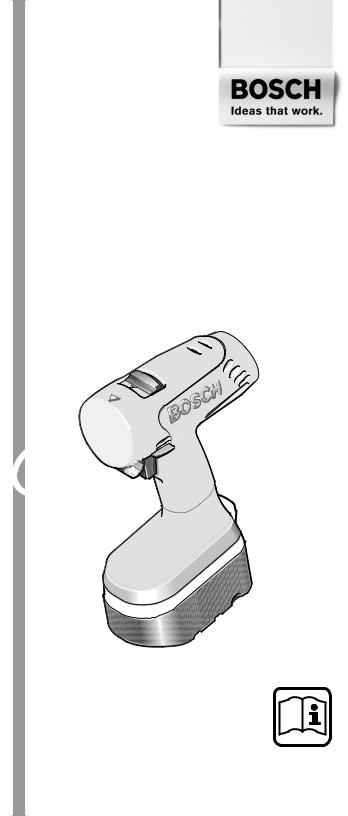
Bedienungsanleitung Operating instructions Instructions d’emploi Instrucciones de servicio Manual de instruções Istruzioni d’uso Gebruiksaanwijzing Betjeningsvejledning Bruksanvisning Brukerveiledningen Käyttöohje
δηγία ειρισµ ύ
Kullan∂m k∂lavuzu
Deutsch
English
Français
Español
Português
Italiano
Nederlands
Dansk
Svenska
Norsk
Suomi
Eλληvικά
Türkçe
* Des idées en action.
PSB 12 VE-2 PSB 14,4 VE-2 PSB 18 VE-2 PSB 24 VE-2
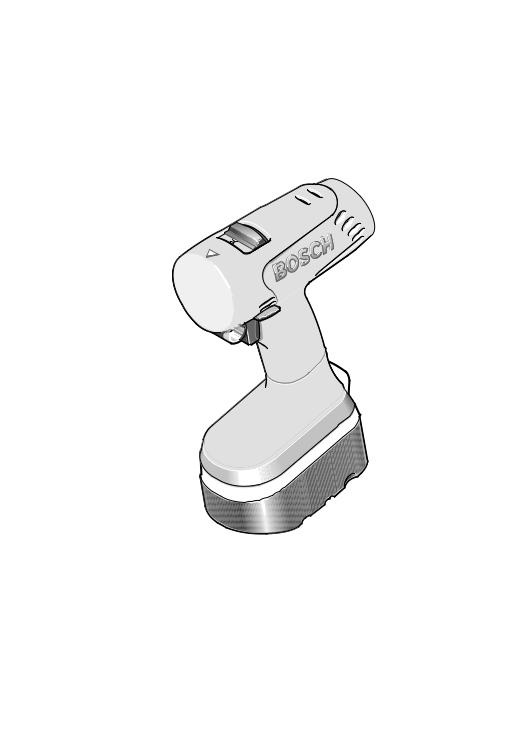
1 |
6 |
|
|
|
7 |
2 |
|
3 |
8 |
|
|
|
9 |
4 |
|
|
10 |
5 |
|
PSB 18 VE-2 |
|
PSB 24 VE-2 |
|
2 • 2 609 932 336 • 04.02 |
|

A |
4 |
C |
|
13 |
E |
B |
11 |
12 |
11 |
D |
|
13 |
14
3 • 2 609 932 336 • 04.02

Gerätekennwerte
Akku-Schlagbohrschrauber |
|
PSB 12 VE-2 |
PSB 14,4 VE-2 PSB 18 VE-2 |
PSB 24 VE-2 |
|||||
Bestellnummer |
|
0 603 941 5.. |
0 603 941 4.. |
0 603 941 3.. |
0 603 941 2.. |
||||
Leerlaufdrehzahl |
|
|
|
|
|
|
|
|
|
1. Gang |
[min-1] |
0 |
– 400 |
0 |
– 400 |
0 |
– 450 |
0 |
– 500 |
2. Gang |
[min-1] |
0 |
– 1 500 |
0 |
– 1 500 |
0 |
– 1 600 |
0 |
– 1 800 |
max. Drehmoment weicher |
[Nm] |
18 |
20 |
23 |
30 |
||||
Schraubfall nach ISO 5393 |
|||||||||
max. Bohr-Ø |
|
|
|
|
|
|
|
|
|
Stahl |
[mm] |
12 |
12 |
13 |
13 |
||||
Holz |
[mm] |
20 |
25 |
28 |
30 |
||||
Mauerwerk |
[mm] |
10 |
10 |
14 |
15 |
||||
Schrauben-Ø, max. |
[mm] |
6 |
|
8 |
|
8 |
|
8 |
|
Bohrfutterspannbereich |
[mm] |
1 |
– 10 |
1 |
– 10 |
1 |
– 10 |
1 |
– 13 |
Bohrspindelgewinde |
|
1/2 " |
1/2 " |
1/2 " |
1/2 " |
||||
Gewicht mit Akku, ca. |
[kg] |
2,1 |
2,2 |
2,3 |
2,7 |
||||
|
|
|
|
|
|
|
|
|
|
Akku |
|
NiCd |
NiCd |
NiCd |
NiCd |
Temperaturüberwachung |
|
NTC |
NTC |
NTC |
NTC |
Nennspannung |
[V=] |
12 |
14,4 |
18 |
24 |
Kapazität |
[Ah] |
1,5 |
1,5 |
1,5 |
1,5 |
Gewicht, ca. |
[kg] |
0,6 |
0,7 |
0,8 |
1,1 |
Bitte die Bestellnummer Ihrer Maschine beachten. Die Handelsbezeichnungen einzelner Maschinen können variieren.
Geräteelemente
Die Nummerierung der Geräteelemente bezieht sich auf die Darstellung des Gerätes auf der Grafikseite.
1Gangwahlschalter
2Drehmoment-Einstellring
3Schnellspannbohrfutter
4Zusatzgriff (PSB 18 VE-2/PSB 24 VE-2)
5Akku
6Magazin für Schraubendrehereinsätze (Bits)
7Schrauberklinge*
8Drehrichtungsumschalter
9Ein-/Ausschalter
10Akku-Entriegelungstaste
11Schraubendrehereinsatz (Bit)*
12Universalbithalter*
13Innensechskantschlüssel*
14Sicherungsschraube
*Abgebildetes oder beschriebenes Zubehör gehört teilweise nicht zum Lieferumfang.
Geräusch-/Vibrationsinformation
Messwerte ermittelt entsprechend EN 60 745.
Der A-bewertete Schalldruckpegel des Gerätes ist typischerweise kleiner als 70 dB (A).
Der Geräuschpegel beim Arbeiten kann 85 dB (A) überschreiten.
Gehörschutz tragen!
Die Hand-Arm-Vibration ist typischerweise niedriger als 2,5 m/s2.
Bestimmungsgemäßer Gebrauch
Das Gerät ist bestimmt zum Eindrehen und Lösen von Schrauben, zum Bohren in Holz, Metall, Keramik und Kunststoff und zum Schlagbohren in Ziegel, Beton und Gestein.
4 • 2 609 932 336 • TMS • 26.01.04 |
Deutsch - 1 |

Zu Ihrer Sicherheit
Gefahrloses Arbeiten mit dem Gerät ist nur möglich, wenn Sie die Bedienungsanleitung und die Sicherheitshinweise vollständig lesen und die darin enthaltenen Anweisungen strikt be-
folgen. Zusätzlich müssen die allgemeinen Sicherheitshinweise im beigefügten Heft befolgt werden.
■Schutzbrille tragen.
■Bei langen Haaren Haarschutz tragen. Nur mit eng anliegender Kleidung arbeiten.
■Vor jeder Benutzung Gerät und Akku überprüfen. Werden Schäden festgestellt, Gerät nicht weiter benutzen. Reparatur nur von einem Fachmann durchführen lassen. Gerät nie selbst öffnen.
■Vor allen Arbeiten am Gerät (z. B. Wartung, Werkzeugwechsel, usw.) sowie bei dessen Transport und Aufbewahrung den Drehrichtungsumschalter stets in Mittelstellung bringen. Sonst besteht Verletzungsgefahr bei unbeabsichtigtem Betätigen des Ein-/Aus- schalters.
■Überzeugen Sie sich vor der Benutzung vom sicheren Sitz des Akkus im Gerät.
■Das Gerät nicht so weit belasten, dass es zum Stillstand kommt.
■PSB 18 VE-2/PSB 24 VE-2: Verwenden Sie Ihr Gerät nur mit dem Zusatzgriff 4.
Beim Arbeiten das Gerät immer fest mit beiden Händen halten und für einen sicheren Stand sorgen.
■Verwenden Sie geeignete Suchgeräte, um verborgene Versorgungsleitungen aufzuspüren, oder ziehen Sie die örtliche Versorgungsgesellschaft hinzu.
Kontakt mit Elektroleitungen kann zu Feuer und elektrischem Schlag führen. Beschädigung einer Gasleitung kann zur Explosion führen. Eindringen in eine Wasserleitung verursacht Sachbeschädigung.
■Gerät gut festhalten: Beim Festziehen und Lösen von Schrauben können kurzzeitig hohe Reaktionsmomente auftreten.
■Sichern Sie das Werkstück. Ein mit Spannvorrichtungen oder Schraubstock festgehaltenes Werkstück ist sicherer gehalten als mit Ihrer Hand.
■Niemals Kindern die Benutzung des Gerätes gestatten.
■Bosch kann nur dann eine einwandfreie Funktion des Gerätes zusichern, wenn das für dieses Gerät vorgesehene Original-Zubehör verwendet wird.
Akku und Ladegerät
■Unbedingt die beiliegende Bedienungsanleitung des Ladegerätes lesen!
■Akku nicht öffnen sowie vor Stoß schützen. Trocken und frostsicher aufbewahren.
■Erwärmten Akku vor dem Laden abkühlen lassen.
■Akku vor Hitze und Feuer schützen: Explosionsgefahr!
■Den Akku nicht in den Hausmüll, ins Feuer oder ins Wasser werfen.
Vor der Inbetriebnahme
Akku laden
Ein neuer oder längere Zeit nicht verwendeter Akku bringt erst nach ca. 5 Ladeund Entladezyklen seine volle Leistung.
Zur Entnahme des Akkus 5 die Akku-Entriege- lungstasten 10 drücken und den Akku nach hinten herausziehen. Keine Gewalt anwenden.
Der Akku ist mit einer NTC-Temperaturüberwa- chung ausgestattet, welche Ladung nur im Temperaturbereich zwischen 0 °C und 45 °C zulässt. Dadurch wird eine hohe Akku-Lebensdauer erreicht.
Eine wesentlich verkürzte Betriebszeit nach der Aufladung zeigt an, dass die Akkus verbraucht sind und ersetzt werden müssen.
■ Hinweise zum Umweltschutz beachten.
Zusatzgriff (siehe Bild A )
(PSB 18 VE-2/PSB 24 VE-2)
■Verwenden Sie Ihr Gerät nur mit dem Zusatzgriff 4.
Den Zusatzgriff 4 abhängig von der Arbeitsweise rechts oder links am Gerätekopf einschrauben.
5 • 2 609 932 336 • TMS • 26.01.04 |
Deutsch - 2 |

Werkzeugwechsel
Das Bohrfutter 3 durch Drehen öffnen, bis das Werkzeug eingesetzt werden kann. Das Werkzeug einsetzen.
Die Hülse des Schnellspannbohrfutters 3 von Hand kräftig zudrehen bis kein Überrasten („Klick“) mehr hörbar ist. Das Bohrfutter wird dadurch automatisch verriegelt.
Drehen Sie die Hülse in Gegenrichtung um das Werkzeug zu entnehmen.
Schrauben (siehe Bild B )
Die Schrauberklinge 7 direkt in das Bohrfutter einspannen oder bei Verwendung von Schraubendrehereinsätzen (Bits) 11 zusätzlichen Universalbithalter 12 verwenden.
Inbetriebnahme
Akku einsetzen
Den Drehrichtungsumschalter 8 auf Mitte = Einschaltsperre stellen und den geladenen Akku 5 in den Griff einrasten lassen.
Ein-/Ausschalten
Zur Inbetriebnahme des Gerätes den Ein-/Aus- schalter 9 drücken und gedrückt halten.
Die Maschine läuft je nach Druck auf den Ein-/Ausschalter 9 mit variabler Drehzahl zwischen 0 und Maximum. Leichter Druck bewirkt eine kleine Drehzahl und macht somit einen sanften, kontrollierten Anlauf möglich. Das Gerät nicht so stark belasten, dass es zum Stillstand kommt.
Zum Ausschalten des Gerätes den Ein-/Aus- schalter 9 loslassen.
Auslaufbremse
Beim Loslassen des Ein-/Ausschalters 9 wird das Bohrfutter abgebremst und dadurch das Nachlaufen des Werkzeugs verhindert.
Bei Schraubarbeiten den Ein-/Ausschalter 9 erst dann loslassen, wenn die Schraube bündig in das Material eingedreht ist. Der Schraubenkopf dringt dann nicht in das Material ein.
Mechanische Gangwahl
Mit dem Gangwahlschalter 1 können zwei Drehzahlbereiche vorgewählt werden:
1. Gang: |
Niedrige Drehzahl, große Kraft. |
2. Gang: |
Hohe Drehzahl, geringere Kraft. |
Die Gänge dürfen nur bei stillstehender Maschine umgeschaltet werden. Rastet der Gang nicht ganz ein, kurz den Ein-/Ausschalter 9 drücken.
Vollautomatische Spindelarretierung (Auto-Lock)
Bei nicht gedrücktem Ein-/Ausschalter 9 wird die Bohrspindel arretiert.
Dies ermöglicht ein schnelles, bequemes und einfaches Wechseln des Einsatzwerkzeuges im Bohrfutter.
Das arretierte Bohrfutter ermöglicht das Nachziehen überstehender Schrauben durch Verwendung der ausgeschalteten Maschine als Schraubendreher.
Umschalten der Drehrichtung
Den Drehrichtungsumschalter 8 nur bei Stillstand betätigen.
a |
b |
Mit dem Drehrichtungsumschalter 8 wird die Drehrichtung der Maschine umgeschaltet. Bei betätigtem Ein-/Aus- schalter 9 ist dies jedoch nicht möglich.
Drehrichtung rechts ( a )
Den Drehrichtungsumschalter nach links bis zum Anschlag durchdrücken (Normalbetrieb: Bohren, Eindrehen von Schrauben etc.).
Drehrichtung links ( b )
Den Drehrichtungsumschalter nach rechts bis zum Anschlag durchdrücken (Lösen bzw. Herausdrehen von Schrauben und Muttern).
6 • 2 609 932 336 • TMS • 26.01.04 |
Deutsch - 3 |

Drehmoment einstellen
Im praktischen Versuch ist zu ermitteln, mit welcher der 5 Einstellungen des Drehmoment-Ein- stellrings 2 die Schrauben bündig in das Material eingedreht werden.
1 |
Schwache Einstellung, z. B. kleine |
|
Schrauben, weiche Werkstoffe. |
||
|
Starke Einstellung, z. B. große Schrau- |
|
5 |
||
ben, harte Werkstoffe. |
Bei richtiger Einstellung des Drehmoments öffnet die Überrastkupplung, sobald die Schraube bündig in das Material eingedreht bzw. das eingestellte Drehmoment erreicht ist. Beim Herausdrehen eine höhere Einstellung wählen, bzw. auf das Symbol „Bohren“ stellen.
Bohren und Schlagbohren
Bohren
Den Drehmoment-Einstellring 2 auf das Symbol „Bohren“ stellen.
Schlagbohren
Den Drehmoment-Einstellring 2 auf das Symbol „Hammerbohren“ stellen.
Bohrfutter wechseln
■Vor allen Arbeiten am Gerät den Akku herausnehmen.
Das Bohrfutter ist gegen das Lösen von der Bohrspindel mit der Sicherungsschraube 14 gesichert. Das Bohrfutter ganz öffnen und die Sicherungsschraube 14 durch Drehen im Uhrzeigersinn vollständig herausschrauben (siehe Bild E ).
Bohrfutter lösen (siehe Bild C )
Die Maschine auf eine standfeste Unterlage (z. B. Werkbank) legen. Die Maschine festhalten und das Bohrfutter wie eine Schraube durch Linksdrehen lösen ( ). Ein festsitzendes Bohrfutter wird durch einen Schlag auf den langen Schaft des Innensechskantschlüssels 13 gelöst.
Bohrfutter festziehen (siehe Bild D )
Die Montage des Bohrfutters erfolgt in umgekehrter Reihenfolge ( ).
Tipps
■Verwenden Sie nur zum Schraubenkopf passende Schrauberklingen/Bits.
■Bei Eindrehen größerer, längerer Schrauben in harten Werkstoffen am besten vorbohren.
■Beim Bohren in Metall nur einwandfreie geschärfte HSS-Bohrer (HSS = Hochleistungs- Schnell-Schnittstahl) verwenden. Entsprechende Qualität garantiert das Bosch-Zube- hör-Programm.
Wartung und Reinigung
■Vor allen Arbeiten am Gerät den Akku herausnehmen.
Gerät und Lüftungsschlitze stets sauber halten, um gut und sicher zu arbeiten.
Sollte das Gerät trotz sorgfältiger Herstellungsund Prüfverfahren einmal ausfallen, ist die Reparatur von einer autorisierten Kundendienststelle für Bosch-Elektrowerkzeuge ausführen zu lassen.
Bei allen Rückfragen und Ersatzteilbestellungen bitte unbedingt die 10-stellige Bestellnummer laut Typenschild des Gerätes angeben.
7 • 2 609 932 336 • TMS • 26.01.04 |
Deutsch - 4 |

Umweltschutz
Rohstoffrückgewinnung statt Müllentsorgung
Gerät, Zubehör und Verpackung sollten einer umweltgerechten Wiederverwertung zugeführt werden.
Diese Anleitung ist aus chlorfrei gefertigtem Re- cycling-Papier hergestellt.
Zum sortenreinen Recycling sind Kunststoffteile gekennzeichnet.
Nickel-Cadmium-Akku:
Wenn Ihr Produkt mit einem Nickel-Cadmium- Akku ausgerüstet ist,
muss der Akku gesammelt, recycelt oder auf umweltfreundliche Weise entsorgt werden.
Defekte oder verbrauchte Akkus müssen gemäß Richtlinie 91/157/EWG recycelt werden.
Nicht mehr gebrauchsfähige Akkus/Batterien können direkt abgegeben werden bei:
Deutschland
Recyclingzentrum Elektrowerkzeuge Osteroder Landstraße 3
37589 Kalefeld
Schweiz
Batrec AG
3752 Wimmis BE
In Deutschland sind nicht mehr gebrauchsfähige Geräte zum Recycling beim Handel abzugeben oder (ausreichend frankiert) direkt einzuschicken an:
Recyclingzentrum Elektrowerkzeuge Osteroder Landstraße 3
37589 Kalefeld
Service und Kundenberater
Explosionszeichnungen und Informationen zu Ersatzteilen finden Sie unter: www.bosch-pt.com
www.powertool-portal.de, das Internetportal für Heimwerker und Gartenfreunde www.dha.de, das komplette Service-Angebot der Deutschen Heimwerker Akademie
Deutschland
Robert Bosch GmbH Servicezentrum Elektrowerkzeuge
Zur Luhne 2 |
|
37589 Kalefeld |
|
Service: ....................................... |
01 80 - 3 35 54 99 |
Fax: ........................................... |
+49 (0) 55 53 / 20 22 37 |
Kundenberater: ...................... |
01 80 - 3 33 57 99 |
Österreich |
|
ABE Service GmbH |
|
Jochen-Rindt-Straße 1 |
|
1232 Wien |
|
Service: ..................................... |
+43 (0)1 / 61 03 80 |
Fax: ............................................... |
+43 (0)1 / 61 03 84 91 |
Kundenberater:............ |
+43 (0)1 / 797 22 3066 |
E-Mail: abe@abe-service.co.at |
|
Schweiz |
|
Service: ................................. |
+41 (0)1 / 8 47 16 16 |
Fax: .................................................. |
+41 (0)1 / 8 47 16 57 |
Kundenberater ............................... |
0 800 55 11 55 |

 Konformitätserklärung
Konformitätserklärung
Wir erklären in alleiniger Verantwortung, dass dieses Produkt mit den folgenden Normen oder normativen Dokumenten übereinstimmt: EN 60 745 (Akku-Geräte) bzw. EN 60 335 (Akku-Ladege- räte) gemäß den Bestimmungen der Richtlinien 73/23/EWG, 89/336/EWG, 98/37/EG.
04
Dr. Egbert Schneider |
Dr. Eckerhard Strötgen |
Senior Vice President |
Head of Product |
Engineering |
Certification |
Robert Bosch GmbH, Geschäftsbereich Elektrowerkzeuge
Änderungen vorbehalten
8 • 2 609 932 336 • TMS • 26.01.04 |
Deutsch - 5 |

Tool Specifications
Cordless impact drill and |
|
PSB 12 VE-2 |
PSB 14,4 VE-2 PSB 18 VE-2 |
PSB 24 VE-2 |
|||||
screwdriver |
|
||||||||
Order number |
|
0 603 941 5.. |
0 603 941 4.. |
0 603 941 3.. |
0 603 941 2.. |
||||
No-load speed |
|
|
|
|
|
|
|
|
|
1st gear |
[rpm] |
0 |
– 400 |
0 |
– 400 |
0 |
– 450 |
0 |
– 500 |
2nd gear |
[rpm] |
0 |
– 1 500 |
0 |
– 1 500 |
0 |
– 1 600 |
0 |
– 1 800 |
max. torque, soft screwdriving |
|
|
|
|
|
|
|
|
|
application according to |
[Nm] |
18 |
20 |
23 |
30 |
||||
ISO 5393 |
|||||||||
Maximum drilling Ø |
|
|
|
|
|
|
|
|
|
Steel |
[mm] |
12 |
12 |
13 |
13 |
||||
Wood |
[mm] |
20 |
25 |
28 |
30 |
||||
Brickwork |
[mm] |
10 |
10 |
14 |
15 |
||||
Screw diameter, max. |
[mm] |
6 |
|
8 |
|
8 |
|
8 |
|
Chuck clamping range |
[mm] |
1 |
– 10 |
1 |
– 10 |
1 |
– 10 |
1 |
– 13 |
Drill spindle thread |
|
1/2 " |
1/2 " |
1/2 " |
1/2 " |
||||
Weight with battery, approx. |
[kg] |
2.1 |
2.2 |
2.3 |
2.7 |
||||
|
|
|
|
|
|
|
|
|
|
Battery |
|
NiCd |
NiCd |
NiCd |
NiCd |
Temperature control |
|
NTC |
NTC |
NTC |
NTC |
Rated voltage |
[V=] |
12 |
14.4 |
18 |
24 |
Capacity |
[Ah] |
1.5 |
1.5 |
1.5 |
1.5 |
Weight, approx. |
[kg] |
0.6 |
0.7 |
0.8 |
1.1 |
Please observe the order number of your machine. The trade names of the individual machines may vary.
Machine Elements
The numbering of the device elements refers to the illustration of the machine on the graphics page.
1Gear selector
2Torque setting ring
3Keyless chuck
4Auxiliary handle
(PSB 18 VE-2/PSB 24 VE-2)
5Battery
6Screwdriver bit magazine
7Screwdriver bit*
8Rotational direction switch
9On/Off switch
10Battery unlocking button
11Screwdriver attachment (bit)*
12Universal bit holder*
13Allen key*
14Locking screw
*Not all of the accessories illustrated or described are included as standard delivery.
Noise/Vibration Information
Measured values determined according to EN 60 745.
Typically the A-weighted sound pressure level of the product is less than 70 dB (A).
The noise level when working can exceed 85 dB (A).
Wear hearing protection!
The typical hand/arm vibration is below 2.5 m/s2.
Intended Use
The machine is intended for screwing in and loosening screws, for drilling in wood, metal, ceramic and plastic and for impact drilling in brick, concrete and stone.
9 • 2 609 932 336 • TMS • 26.01.04 |
English - 1 |

For Your Safety
Working safely with this machine is possible only when the operating and safety information are read completely and the instructions contained therein are strictly followed. In addition, the
general safety notes in the enclosed booklet must be observed.
■Wear safety goggles.
■For long hair, wear hair protection. Work only with closely fitting clothes.
■Before each use, check the machine and battery. If damage is detected, do not use the machine. Have repairs performed only by a qualified technician. Never open the machine yourself.
■Before any work on the machine itself (e. g. maintenance, tool change, etc.) as well as when transporting and storing, always set the rotational direction switch to the centre position. Otherwise danger of injury is given when unintentionally actuating the On/Off switch.
■Convince yourself before using that the battery is securely seated in the machine.
■Do not strain the machine so heavily that it comes to a standstill.
■PSB 18 VE-2/PSB 24 VE-2: Operate the machine only with the auxiliary handle 4.
When working with the machine, always hold it firmly with both hands and provide for a secure stance.
■Use appropriate detectors to determine if utility lines are hidden in the work area or call the local utility company for assistance.
Contact with electric lines can lead to fire and electric shock. Damaging a gas line can lead to explosion. Penetrating a water line causes property damage.
■Hold the power tool securely: When tightening or releasing screws, high reaction torque can briefly occur.
■Secure the workpiece. A workpiece clamped with clamping devices or in a vice is held more secure than by hand.
■Never allow children to use the machine.
■Bosch is only able to ensure perfect operation of the machine if the original accessories intended for it are used.
Battery and Battery Charger
■The enclosed operating instructions for the battery charger must be read carefully!
■Do not open the battery, and protect it from impact. Store in a dry and frost-free place.
■Allow a heated battery to cool before charging.
■Protect the battery from heat and fire: Danger of explosion!
■Do not dispose of the battery in household waste or discard into fire or water.
Before Putting into Operation
Battery Charging
A battery that is new or has not been used for a longer period does not develop its full capacity until after approximately 5 charging/discharging cycles.
To remove the battery 5, press the unlocking buttons 10 and pull out the battery to the rear. Do not exert any force.
The battery is equipped with an NTC temperature control which allows charging only within a temperature range of between 0 °C and 45 °C. A long battery service life is achieved in this manner.
A significantly reduced working period after charging indicates that the batteries are used and must be replaced.
■Observe the notes on environmental protection.
Auxiliary Handle (see figure A ) (PSB 18 VE-2/PSB 24 VE-2)
■Operate the machine only with the auxiliary handle 4.
Screw the auxiliary handle 4 on the right or left of the machine head depending on the working method.
10 • 2 609 932 336 • TMS • 26.01.04 |
English - 2 |
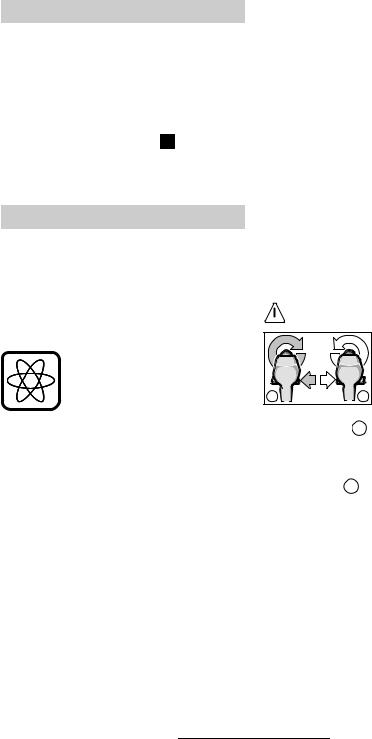
Changing the Tool
Open the drill chuck 3 by turning until the tool can be inserted. Insert the tool.
Firmly tighten the sleeve of the keyless chuck 3 by hand until the locking action (“click”) is no longer heard. This automatically locks the chuck.
Rotate the sleeve in the reverse direction to remove the tool.
Screwdriving (see figure B )
Directly clamp the screwdriver bit 7 into the drill chuck or use the additional universal bit holder 12 when operating with hex shank bits 11.
Starting Operation
Inserting the Battery
Set the rotational direction switch 8 to the centre position = lock-off and allow the charged battery 5 to engage into the handle.
Switching On and Off
To start the machine, press the On/Off switch 9 and keep it depressed.
The machine runs with variable speed between 0 and maximum, depending on the pressure applied to the On/Off switch 9. Light pressure results in a low rotational speed thus allowing smooth, controlled starts. Do not strain the machine so heavily that it comes to a standstill.
To switch off the machine, release the On/Off switch 9.
Electric Brake
When releasing the On/Off switch 9 the speed of the drill chuck is reduced to a stop, thus preventing the run-on of the tool.
For screwdriving applications, wait until the screw is flush with the material and then release the On/ Off switch 9. The screw head does not penetrate into the material then.
Gear Selection, Mechanical
Two speed ranges can be preselected with the gear selector 1:
1st gear: |
Low rotational speed, high power. |
2nd gear: |
High rotational speed, less power. |
The speed settings may only be changed when the machine is motionless. If the speed setting has not quite notched in properly, briefly press the On/Off switch 9.
Fully Automatic Spindle Locking (Auto-Lock)
The drill spindle is locked when the On/Off switch 9 is not pressed.
This makes quick and easy changing of the tool in the drill chuck possible.
The locked drill chuck enables retightening of projecting screws by using the switched-off machine as a screwdriver.
Reversing the Rotational Direction
Operate the rotational direction switch 8 only at a standstill.
a |
b |
Right Rotation ( a )
The rotational direction switch 8 is used to reverse the rotational direction of the machine. However, this is not possible with the On/Off switch 9 actuated.
Turn the rotational direction switch through to the left stop (normal operation: drilling, screwdriving, etc.).
Left Rotation ( b )
Press the rotational direction switch through to the right stop (for loosening and unscrewing screws and nuts).
11 • 2 609 932 336 • TMS • 26.01.04 |
English - 3 |
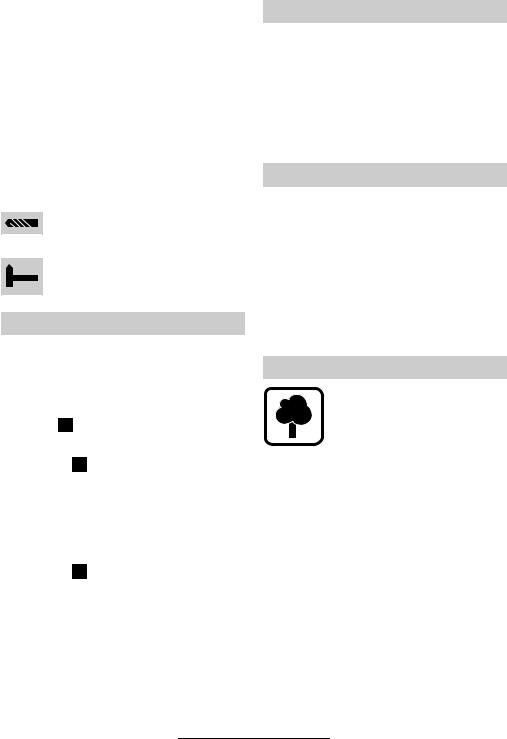
Setting the Torque
Carry out a practical test to determine with which of the 5 settings of the torque setting ring 2 the screws are driven flush into the material.
1 |
Low setting, e. g., small screws, soft |
|
materials. |
||
|
High setting, e. g., large screws, hard |
|
5 |
||
materials. |
||
|
|
With the correct setting, the clutch disengages as soon as the screw is driven flush into the material or the set torque is reached. Select a higher setting when driving out screws, or set to the “Drilling” symbol.
Drilling and Impact Drilling
Drilling
Set the torque setting ring 2 to the “Drilling” symbol.
Impact Drilling
Set the torque setting ring 2 to the “Hammer Drilling” symbol.
Replacing the Drill Chuck
■Before any work on the machine itself, remove the battery.
The locking screw 14 secures the drill chuck against loosening from the drill spindle. Fully open the drill chuck and completely unscrew the locking screw 14 by turning in clockwise direction (see figure E ).
Loosening the Drill Chuck (see figure C )
Place the machine on a stable surface (e. g. workbench). Hold the machine firmly and loosen the chuck by turning to the left, as when unscrewing a screw ( ). Loosen a tight chuck by giving the long end of the Allen key 13 a sharp blow.
Tightening the Drill Chuck (see figure D )
The drill chuck is mounted in reverse order ( ).
Tips
■Use only screwdriver bits that fit properly in the head of the screw.
■When driving in larger and/or longer screws in hard material, it is advisable to drill a pilot hole first.
■For drilling in metal, use only perfectly sharpened HSS drills. The appropriate quality is guaranteed by the Bosch accessories program.
Maintenance and Cleaning
■Before any work on the machine itself, remove the battery.
For safe and proper working, always keep the machine and the ventilation slots clean.
If the machine should fail despite the care taken in manufacturing and testing procedures, repair should be carried out by an after-sales service centre for Bosch power tools.
In all correspondence and spare parts orders, please always include the 10-digit order number given on the nameplate of the machine.
Environmental Protection
Recycle raw materials instead of disposing as waste
The machine, accessories and packaging should be sorted for environmental-friendly recycling.
These instructions are printed on recycled paper manufactured without chlorine.
The plastic components are labelled for categorized recycling.
12 • 2 609 932 336 • TMS • 26.01.04 |
English - 4 |

Nickel-cadmium-bat-
tery: If your product is equipped with a nickel- cadmium-battery, the bat-
tery must be collected, recycled or disposed of in an environmentally-friendly way.
Defective or worn out batteries must be recycled according to the guidelines 91/157/EEC.
Batteries no longer suitable for use can be directly returned at:
Great Britain
Robert Bosch Ltd. (B.S.C.)
P.O. Box 98
Broadwater Park
North Orbital Road
Denham-Uxbridge
Middlesex UB 9 5HJ
Service ............................ |
+44 (0) 18 95 / 83 87 82 |
Advice line .................... |
+44 (0) 18 95 / 83 87 91 |
Fax ............................................. |
+44 (0) 18 95 / 83 87 89 |
Australia
Robert Bosch Australia Ltd.
RBAU/SPT2
1555 Centre Road
P.O. Box 66 Clayton
3168 Clayton/Victoria
............................................... |
+61 (0)1 / 800 804 777 |
Fax............................................... |
+61 (0)1 / 800 819 520 |
www.bosch.com.au
E-Mail: CustomerSupportSPT@au.bosch.com
New Zealand |
|
Robert Bosch Limited |
|
14-16 Constellation Drive |
|
Mairangi Bay |
|
Auckland |
|
New Zealand |
|
..................................................... |
+64 (0)9 / 47 86 158 |
Fax..................................................... |
+64 (0)9 / 47 82 914 |
Service and Customer
Assistance
Exploded views and information on spare parts can be found under: www.bosch-pt.com
Great Britain
Robert Bosch Ltd. (B.S.C.)
P.O. Box 98 |
|
Broadwater Park |
|
North Orbital Road |
|
Denham-Uxbridge |
|
Middlesex UB 9 5HJ |
|
Service ............................ |
+44 (0) 18 95 / 83 87 82 |
Advice line .................... |
+44 (0) 18 95 / 83 87 91 |
Fax ............................................. |
+44 (0) 18 95 / 83 87 89 |
Ireland |
|
Beaver Distribution Ltd. |
|
Greenhills Road |
|
Tallaght-Dublin 24 |
|
Service ................................... |
+353 (0)1 / 414 9400 |
Fax .................................................... |
+353 (0)1 / 459 8030 |

 Declaration of Conformity
Declaration of Conformity
We declare under our sole responsibility that this product is in conformity with the following standards or standardization documents. EN 60 745 (Battery powered products) and EN 60 335 (Battery charger) according to the provisions of the directives 73/23/EEC, 89/336/EEC, 98/37/EC.
04
Dr. Egbert Schneider |
Dr. Eckerhard Strötgen |
Senior Vice President |
Head of Product |
Engineering |
Certification |
Robert Bosch GmbH, Geschäftsbereich Elektrowerkzeuge
Subject to change without notice
13 • 2 609 932 336 • TMS • 26.01.04 |
English - 5 |

Caractéristiques techniques
Visseuse-perceuse à |
|
PSB 12 VE-2 |
PSB 14,4 VE-2 PSB 18 VE-2 |
PSB 24 VE-2 |
|||||
percussion sans fil |
|
||||||||
Référence |
|
0 603 941 5.. |
0 603 941 4.. |
0 603 941 3.. |
0 603 941 2.. |
||||
Régime à vide |
|
|
|
|
|
|
|
|
|
1ère vitesse |
[tr/min] |
0 |
– 400 |
0 |
– 400 |
0 |
– 450 |
0 |
– 500 |
2ème vitesse |
[tr/min] |
0 |
– 1 500 |
0 |
– 1 500 |
0 |
– 1 600 |
0 |
– 1 800 |
Couple max. vissage tendre |
[Nm] |
18 |
20 |
23 |
30 |
||||
suivant ISO 5393 |
|||||||||
Ø perçage max. |
|
|
|
|
|
|
|
|
|
Acier |
[mm] |
12 |
12 |
13 |
13 |
||||
Bois |
[mm] |
20 |
25 |
28 |
30 |
||||
Maçonnerie |
[mm] |
10 |
10 |
14 |
15 |
||||
Ø des vis, max. |
[mm] |
6 |
|
8 |
|
8 |
|
8 |
|
Fixation du mandrin de |
[mm] |
1 |
– 10 |
1 |
– 10 |
1 |
– 10 |
1 |
– 13 |
perçage |
|||||||||
Fixation de la broche |
|
1/2 " |
1/2 " |
1/2 " |
1/2 " |
||||
Poids avec accumulateur, env. |
[kg] |
2,1 |
2,2 |
2,3 |
2,7 |
||||
|
|
|
|
|
|
|
|
|
|
Accumulateur |
|
NiCd |
NiCd |
NiCd |
NiCd |
Contrôle de température |
|
NTC |
NTC |
NTC |
NTC |
Tension nominale |
[V=] |
12 |
14,4 |
18 |
24 |
Capacité |
[Ah] |
1,5 |
1,5 |
1,5 |
1,5 |
Poids, env. |
[kg] |
0,6 |
0,7 |
0,8 |
1,1 |
Faire attention au numéro de référence de l’appareil. Les désignations commerciales des différents appareils peuvent varier.
Eléments de l’appareil
La numérotation des éléments de l’appareil se rapporte aux figures représentant l’appareil sur la page des graphiques.
1Commutateur de vitesse
2Bague de réglage du couple
3Mandrin de perçage à serrage rapide
4Poignée supplémentaire (PSB 18 VE-2/PSB 24 VE-2)
5Accumulateur
6Magasin à embouts de tournevis (bits)
7Lame de tournevis*
8Commutateur du sens de rotation
9Interrupteur Marche/Arrêt
10Touche de déverrouillage de l’accumulateur
11Embout tournevis*
12Porte-embout universel*
13Clé mâle pour vis à six pans creux*
14Vis de retenue
*Les accessoires reproduits ou décrits ne sont pas tous compris dans le contenu de l’emballage.
Bruits et vibrations
Valeurs de mesure obtenues conformément à la norme européenne EN 60 745.
La mesure réelle (A) du niveau sonore de l’outil est inférieure à 70 dB (A).
Le niveau sonore en fonctionnement peut dépasser 85 dB (A).
Munissez-vous d’une protection acoustique !
La vibration de l’avant-bras est en-dessous de 2,5 m/s2.
Restrictions d’utilisation
L’appareil est conçu pour le vissage et dévissage des vis, pour le perçage dans le bois, le métal, la céramique et les matières plastiques ainsi que pour le perçage à percussion dans la brique, le béton et dans la roche.
14 • 2 609 932 336 • TMS • 26.01.04 |
Français - 1 |

Pour votre sécurité
Pour travailler sans risque avec cet appareil, lire intégralement au préalable les instructions d’utilisation et les remarques concernant la sécurité. Respecter scrupuleusement les indica-
tions et les consignes qui y sont données. Respecter en plus les indications générales de sécurité se trouvant dans le cahier ci-joint.
■Porter des lunettes de protection.
■Les personnes portant les cheveux longs doivent se munir d’un protège-cheveux. Ne pas travailler avec des vêtements amples.
■Avant chaque utilisation, vérifier l’appareil et l’accumulateur. Ne jamais mettre en marche un appareil endommagé. Les réparations ne doivent être confiées qu’à un spécialiste. Ne jamais ouvrir l’appareil soi-même.
■Avant d’effectuer des travaux sur l’appareil (p. ex. travaux d’entretien, changement d’outils, etc.) et avant de le transporter ou stocker, toujours mettre le commutateur de sens de rotation en position médiane. Sinon, il y a risque de blessure lorsqu’on appuie par mégarde sur l’interrupteur Marche/Arrêt.
■Avant utilisation, toujours contrôler que l’accumulateur est correctement en place.
■Ne jamais charger l’appareil jusqu’à provoquer son arrêt complet.
■PSB 18 VE-2/PSB 24 VE-2 : N’utiliser votre appareil qu’avec la poignée supplémentaire 4. Pendant le travail avec cet appareil, le tenir toujours fermement des deux mains. Adopter une position stable et équilibrée.
■Utiliser des détecteurs appropriés afin de déceler des conduites cachées ou consulter les entreprises de distribution (de gaz et d’électricité) locales.
Un contact avec des conduites d’électricité peut provoquer un incendie ou un choc électrique. L’endommagement d’une conduite de gaz peut provoquer une explosion. La perforation d’une conduite d’eau provoque des dégâts matériels.
■Bien tenir l’appareil : Lors du vissage ou du dévissage, il peut y avoir des couples de réaction instantanés élevés.
■Bloquer la pièce à travailler. Une pièce à travailler serrée par des dispositifs de serrage ou dans un étau est fixée de manière plus sûre que tenue dans les mains.
■Ne jamais permettre aux enfants d’utiliser cet appareil.
■Bosch ne peut garantir un fonctionnement impeccable que si les accessoires Bosch d’origine prévus pour cet appareil sont utilisés.
Accumulateur et chargeur
■Lire absolument le mode d’emploi du chargeur ci-joint !
■Ne pas ouvrir l’accumulateur. Le protéger de tout choc mécanique. L’entreposer dans un endroit sec et à l’abri du gel.
■Avant de recharger un accumulateur surchauffé, le laisser refroidir.
■Protéger l’accumulateur contre toute exposition à la chaleur ou au feu : risque d’explosion !
■Ne pas jeter l’accu à la poubelle, ni dans les flammes ou dans l’eau.
Avant la mise en service
Recharge de l’accumulateur
Un accu neuf ou un accu qui n’a pas été utilisé pendant une période assez longue, n’atteint sa pleine puissance qu’après environ cinq cycles de charge et de décharge.
Pour sortir l’accumulateur 5, appuyer sur les boutons de déverrouillage 10 et retirer l’accumulateur vers l’arrière. Ne pas forcer.
L’accumulateur est doté d’un dispositif de surveillance de la température NTC ne permettant la charge que dans une plage de température comprise entre 0 °C et 45 °C. La longévité de l’accumulateur s’en trouve ainsi accrue.
Si le temps de service des accus se raccourcit considérablement après un processus de charge, cela indique que les accus sont usés et qu’ils doivent être remplacés.
■Observer les consignes relatives à la protection de l’environnement.
Poignée supplémentaire (voir figure A )
(PSB 18 VE-2/PSB 24 VE-2)
■N’utiliser votre appareil qu’avec la poignée supplémentaire 4.
En fonction du mode de travail, visser la poignée supplémentaire 4 du côté droit ou gauche de la tête de l’appareil.
15 • 2 609 932 336 • TMS • 26.01.04 |
Français - 2 |
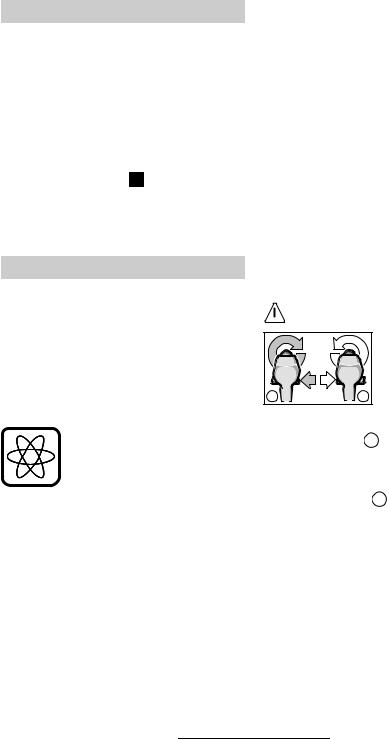
Changement de l’outil
Ouvrir le mandrin de perçage 3 par un mouvement de rotation jusqu’à ce que l’outil puisse être monté. Monter l’outil.
Visser fermement la douille du mandrin à serrage rapide 3 à la main, jusqu’à ce qu’aucun bruit correspondant au passage d’un cran ne soit plus audible (« cliquetis »). Ceci permet le verrouillage automatique du mandrin de perçage.
Tourner le corps dans le sens inverse pour retirer l’outil.
Vissage (voir figure B )
Serrer les lames de tournevis 7 directement dans le mandrin de perçage ou en cas d’utilisation d’embouts tournevis (bits) 11, utiliser en plus un porte-embout universel 12.
Mise en service
Mise en place de l’accumulateur
Mettre le commutateur du sens de rotation 8 dans la position médiane = verrouillage de mise en fonctionnement et faire encliqueter l’accu chargé 5 dans la poignée.
Mise en fonctionnement /Arrêt
Afin de mettre l’appareil en fonctionnement, appuyer sur l’interrupteur Marche/Arrêt 9 et le maintenir appuyé.
En fonction de la pression exercée sur l’interrupteur Marche/Arrêt 9, l’appareil fonctionne à une vitesse comprise entre 0 et le maximum. Une légère pression fait tourner l’appareil à petite vitesse, ce qui permet un démarrage précis et en douceur. Ne pas trop solliciter l’appareil qui risque sinon de s’arrêter.
Afin d’arrêter l’appareil, relâcher l’interrupteur Marche/Arrêt 9.
Frein de ralentissement
Lorsqu’on relâche l’interrupteur Marche/Arrêt 9, le mandrin est freiné, ce qui évite un fonctionnement par inertie de l’outil.
Lors de travaux de vissage, ne relâcher l’interrupteur Marche/Arrêt 9 que lorsque la vis est enfoncée à ras dans le matériau. La tête de vis ne pénètre alors pas le matériau.
Commutation mécanique de la vitesse
Le commutateur de vitesse 1 permet de sélectionner deux plages de vitesse de rotation :
1ère vitesse : Petite vitesse, force élevée.
2ème vitesse : Vitesse élevée, force faible.
On ne peut changer de vitesse que lorsque la machine est à l’arrêt. Si la vitesse ne s’enclenche pas complètement, appuyer un court instant sur l’interrupteur Marche/Arrêt 9.
Blocage de broche automatique (Auto-Lock)
Lorsque l’interrupteur Marche/Arrêt 9 n’est pas appuyé, la broche de perçage est bloquée.
Ceci permet de remplacer l’outil utilisé dans le mandrin de manière rapide, aisée et facile.
Le blocage du mandrin permet de resserrer les vis en saillie, en utilisant la machine à l’arrêt comme d’un tournevis.
Inversion du sens de rotation
N’actionner le commutateur du sens de rotation 8 qu’à l’arrêt total de l’appareil.
a |
b |
Le sens de rotation de l’appareil peut être modifié à l’aide du commutateur du sens de rotation 8. Cela n’est toutefois pas possible en actionnant l’interrupteur Marche/Arrêt 9.
Rotation à droite ( a )
Pousser à fond le commutateur du sens de rotation vers la gauche (service normal : perçage, vissage, etc.).
Rotation à gauche ( b )
Pousser à fond le commutateur du sens de rotation vers la droite (pour les travaux de desserrage, de dévissage de vis et d’écrous).
16 • 2 609 932 336 • TMS • 26.01.04 |
Français - 3 |
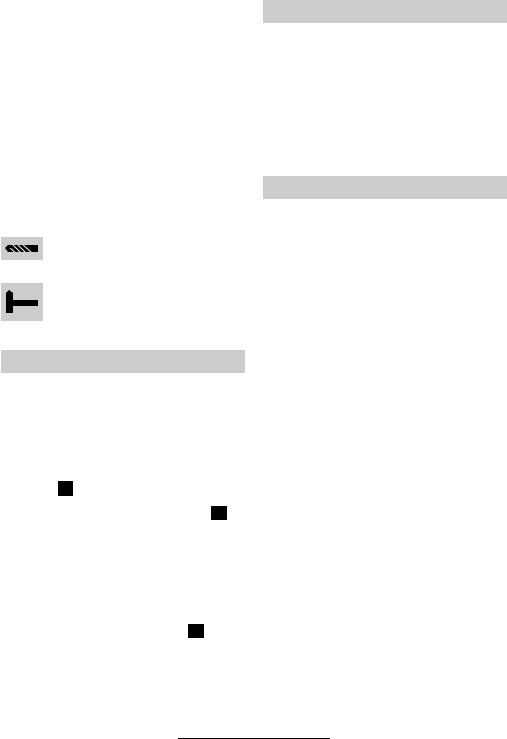
Réglage du couple
En effectuant des essais pratiques, déterminer le réglage approprié parmi les 5 positions possibles de la bague de réglage du couple 2 afin de pouvoir visser correctement les vis afin que leur tête affleure le matériau.
1 |
Couple réduit p. ex. petites vis, maté- |
|
riaux tendres. |
||
|
Couple élevé p. ex. grandes vis, maté- |
|
5 |
||
riaux durs. |
Le réglage est correct lorsque l’embrayage à crans est déclenché dès que la tête de la vis affleure le matériau ou que le couple préréglé est atteint. Pour dévisser, choisir un réglage plus élevé, ou régler sur le symbole « Perçage ».
Perçage et perçage à percussion
Perçage
Positionner la bague de réglage du couple 2 sur le symbole « Perçage ».
Perçage à percussion
Positionner la bague de réglage du couple 2 sur le symbole « Perçage en frappe ».
Changement du mandrin
■Avant toute intervention sur l’appareil proprement dit, retirer l’accumulateur.
Le mandrin de perçage est fixé à l’aide de la vis de blocage 14 qui l’empêche de se détacher de la broche de perçage. Ouvrir complètement le mandrin de perçage et dévisser complètement la vis de blocage 14 par un mouvement de rotation dans le sens des aiguilles d’une montre (voir figure E ).
Desserrer le mandrin (voir figure C )
Poser la appareil sur un support stable (p. ex. établi). Maintenir la appareil et dévisser le mandrin comme si c’était une vis, en tournant à gauche ( ). Un mandrin qui serait trop serré peut être desserré en donnant un léger coup sur le côté le plus long de la clé mâle coudée pour vis à six pans creux 13.
Serrer le mandrin (voir figure D )
Pour monter le mandrin, procéder en sens inverse ( ).
Conseils d’utilisation
■N’utiliser que des lames de tournevis et des embouts de vissage adaptés à la tête de la vis.
■Lors du vissage de vis de taille et de longueur importantes dans des matériaux durs, il est recommandé de percer un avant-trou.
■Lors de perçage dans les métaux, n’utiliser que des forets HSS en bon état et bien affûtés (HSS = aciers super rapides). Le programme d’accessoires Bosch garantit la qualité des forets.
Nettoyage et entretien
■Avant toute intervention sur l’appareil proprement dit, retirer l’accumulateur.
Pour obtenir un travail sûr et satisfaisant, nettoyer régulièrement l’appareil ainsi que ses ouïes de refroidissement.
Si, malgré tous les soins apportés à la fabrication et au contrôle de l’appareil, celui-ci devait avoir un défaut, la réparation ne doit être confiée qu’à une station de service après-vente agréée pour outillage Bosch.
Pour toute demande de renseignements ou commande de pièces de rechange, nous préciser impérativement le numéro de référence à dix chiffres de la appareil indiqué sur la plaque signalétique.
17 • 2 609 932 336 • TMS • 26.01.04 |
Français - 4 |
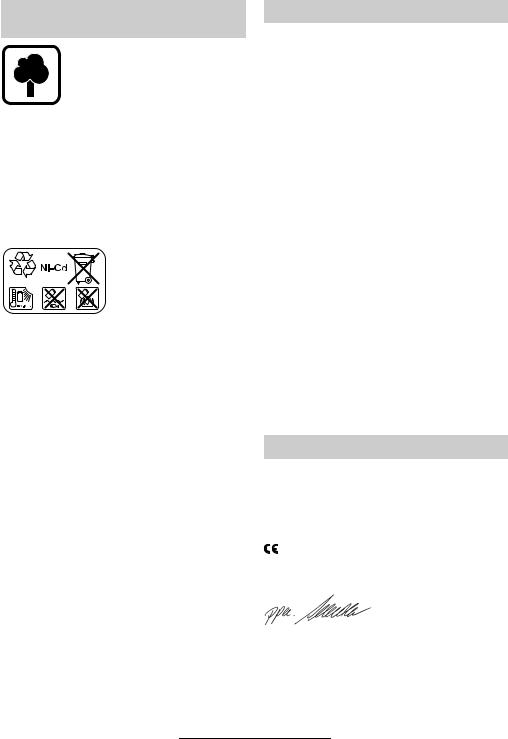
Instructions de protection de l’environnement
Récupération des matières premières plutôt qu’élimination des déchets
Les appareils, comme d’ailleurs leurs accessoires et emballages, doivent pouvoir suivre chacune une voie de recyclage appropriée.
Ce manuel d’instructions a été fabriqué à partir d’un papier recyclé blanchi sans chlore.
Nos pièces plastiques ont été marquées en vue d’un recyclage sélectif des différents matériaux.
Accumulateur Nickel-
Cadmium : Au cas où votre produit serait équipé d’un accu Nickel-Cad-
mium, l’accu doit être récupéré, recyclé ou éliminé en conformité avec les réglementations se rapportant à l’environnement.
Les accus usés ou défectueux doivent être recyclés conformément à la directive 91/157/CEE.
Les accus/piles dont on ne peut plus se servir peuvent être déposés directement auprès de :
Suisse
Batrec AG
3752 Wimmis BE
Service Après-Vente
Vous trouverez des vues éclatées ainsi que des informations concernant les pièces de rechange sous :
www.bosch-pt.com
France |
|
Information par Minitel 11 |
|
Nom : Bosch Outillage |
|
Loc : Saint Ouen |
|
Dépt : 93 |
|
Robert Bosch France S.A. |
|
Service Après-vente/Outillage |
|
B.P. 67-50, Rue Ardoin |
|
93402 St. Ouen Cedex |
|
Service conseil client .................... |
0143 11 9002 |
Numéro Vert.................................... |
0 800 05 50 51 |
Belgique |
|
..................................................... |
+32 (0)2 / 525 51 43 |
Fax..................................................... |
+32 (0)2 / 525 54 20 |
E-Mail : Outillage.Gereedschappen@be.bosch.com |
|
Suisse |
|
.................................................... |
+41 (0)1 / 8 47 16 16 |
Fax.................................................... |
+41 (0)1 / 8 47 16 57 |
Service conseil client ................. |
0 800 55 11 55 |

 Déclaration de conformité
Déclaration de conformité
Nous déclarons sous notre propre responsabilité que ce produit est en conformité avec les normes ou documents normalisés : EN 60 745 (appareils sans fil) respectivement EN 60 335 (chargeurs électriques) conformément aux termes des réglementations 73/23/CEE, 89/336/CEE, 98/37/CE.
04
Dr. Egbert Schneider |
Dr. Eckerhard Strötgen |
Senior Vice President |
Head of Product |
Engineering |
Certification |
Robert Bosch GmbH, Geschäftsbereich Elektrowerkzeuge
Sous réserve de modifications
18 • 2 609 932 336 • TMS • 26.01.04 |
Français - 5 |

Características técnicas
Atornilladora-taladradora de |
|
PSB 12 VE-2 |
PSB 14,4 VE-2 PSB 18 VE-2 |
PSB 24 VE-2 |
|||||
percusión con acumulador |
|
||||||||
Número de pedido |
|
0 603 941 5.. |
0 603 941 4.. |
0 603 941 3.. |
0 603 941 2.. |
||||
Revoluciones en vacío |
|
|
|
|
|
|
|
|
|
1ª velocidad |
[min-1] |
0 |
– 400 |
0 |
– 400 |
0 |
– 450 |
0 |
– 500 |
2ª velocidad |
[min-1] |
0 |
– 1 500 |
0 |
– 1 500 |
0 |
– 1 600 |
0 |
– 1 800 |
par de giro máx. en uniones |
|
|
|
|
|
|
|
|
|
atornilladas blandas según |
[Nm] |
18 |
20 |
23 |
30 |
||||
ISO 5393 |
|||||||||
Ø de perforación máx. |
|
|
|
|
|
|
|
|
|
Acero |
[mm] |
12 |
12 |
13 |
13 |
||||
Madera |
[mm] |
20 |
25 |
28 |
30 |
||||
Ladrillo |
[mm] |
10 |
10 |
14 |
15 |
||||
Ø de tornillo, máx. |
[mm] |
6 |
|
8 |
|
8 |
|
8 |
|
Capacidad de sujeción del |
[mm] |
1 |
– 10 |
1 |
– 10 |
1 |
– 10 |
1 |
– 13 |
portabrocas |
|||||||||
Rosca del husillo de taladrar |
|
1/2 " |
1/2 " |
1/2 " |
1/2 " |
||||
Peso con acumulador, aprox. |
[kg] |
2,1 |
2,2 |
2,3 |
2,7 |
||||
|
|
|
|
|
|
|
|
|
|
Acumulador |
|
NiCd |
NiCd |
NiCd |
NiCd |
Control de temperatura |
|
NTC |
NTC |
NTC |
NTC |
Tensión nominal |
[V=] |
12 |
14,4 |
18 |
24 |
Capacidad |
[Ah] |
1,5 |
1,5 |
1,5 |
1,5 |
Peso, aprox. |
[kg] |
0,6 |
0,7 |
0,8 |
1,1 |
Preste atención al nº de pedido de su máquina. Las denominaciones comerciales en ciertas máquinas pueden variar.
Elementos del aparato
La numeración de los elementos del aparato está referida a su imagen en la página ilustrada.
1Selector de velocidades
2Anillo de ajuste de par
3Portabrocas de sujeción rápida
4Empuñadura adicional
(PSB 18 VE-2/PSB 24 VE-2)
5Acumulador
6Depósito de láminas de destornillador (bits)
7Punta de atornillar*
8Selector de sentido de giro
9Interruptor de conexión/desconexión
10Tecla de desenclavamiento del acumulador
11Lámina de destornillador (bit)*
12Soporte universal de bits*
13Llave macho hexagonal*
14Tornillo de seguridad
*Los accesorios descritos e ilustrados no corresponden en parte al material que se adjunta de serie.
Información sobre ruidos y vibraciones
Determinación de los valores de medición según norma EN 60 745.
El nivel de presión de sonido, típico, medido con un filtro tipo A, es normalmente menor de 70 dB (A).
El nivel de ruido, con la máquina trabajando, podrá sobrepasar circunstancialmente 85 dB (A).
¡Usar protectores auditivos!
El nivel de vibraciones típico en la mano/brazo es menor de 2,5 m/s2.
Utilización reglamentaria
El aparato ha sido proyectado para enroscar y aflojar tornillos, para taladrar madera, metal, cerámica y material sintético, y para taladrar con percusión ladrillo, hormigón y piedra.
19 • 2 609 932 336 • TMS • 26.01.04 |
Español - 1 |

Para su seguridad
Solamente puede trabajar sin peligro con el aparato si lee íntegramente las instrucciones de manejo y las indicaciones de seguridad, ateniéndose estrictamente a las recomendaciones
allí comprendidas. Adicionalmente deberán respetarse las instrucciones de seguridad generales comprendidas en el folleto adjunto.
■Ponerse unas gafas de protección.
■Si tiene el pelo largo, recójaselo bajo una protección adecuada. Trabajar únicamente con vestimenta ceñida al cuerpo.
■Antes de cada utilización controlar el aparato y el acumulador. En caso de detectar algun daño, no continuar usando el aparato. Hacerlo reparar solamente por personal técnico especializado. No abrir jamás el aparato por su propia cuenta.
■Siempre colocar en posición central el selector del sentido de giro antes de cualquier manipulación en el aparato (p. ej. mantenimiento, cambio de útil, etc.) así como al transportarlo y guardarlo. En caso contrario existe el riesgo de lesión al accionar accidentalmente el interruptor de conexión/ desconexión.
■Asegúrese antes de su utilización que el acumulador esté firmemente sujeto en el aparato.
■No solicite el aparato de manera tal que llegue a detenerse.
■PSB 18 VE-2/PSB 24 VE-2: Solamente emplee el aparato con la empuñadura adicional 4.
Trabajar siempre con el aparato sujetándolo firmemente con ambas manos y manteniendo una posición estable.
■Utilice unos instrumentos de exploración adecuados para detectar tuberías y cables ocultos, o consulte a su compañía abastecedora local.
El contacto con cables eléctricos puede provocar un incendio o sacudida eléctrica. El deterioro de tuberías de gas puede producir una explosión. La perforación de una tubería de agua puede causar daños materiales.
■Sujetar firmemente el aparato: al apretar o aflojar tornillos pueden presentarse unos altos pares de reacción.
■Asegure la pieza de trabajo. Una pieza de trabajo fijada con unos dispositivos de sujeción, o en un tornillo de banco, se mantiene sujeta de forma mucho más segura que con la mano.
■Jamás permita que los niños utilicen el aparato.
■Bosch solamente puede garantizar el funcionamiento correcto del aparato si se utilizan los accesorios originales previstos.
Acumulador y cargador
■¡Es imprescindible leer las instrucciones de manejo del cargador que se adjuntan!
■No abrir el acumulador, y protegerlo contra golpes. Guardarlo en un lugar seco y libre de heladas.
■Dejar enfriar un acumulador caliente antes de cargarlo.
■Proteger el acumulador del calor y del fuego: ¡Peligro de explosión!
■No tirar el acumulador a la basura, fuego o agua.
Antes de la puesta en funcionamiento
Carga del acumulador
Un acumulador nuevo o que no haya sido usado durante largo tiempo alcanza su plena potencia después de aprox. 5 ciclos de carga y descarga.
Para desmontar el acumulador 5 presionar las teclas de desenclavamiento del acumulador 10 y retirar éste tirando de él hacia atrás. No proceda con brusquedad.
El acumulador está equipado con un sensor de temperatura NTC que solamente permite la carga a temperaturas entre 0 °C y 45 °C. Con esto se consigue una larga duración del acumulador.
Si después de cargar los acumuladores el tiempo de funcionamiento fuese muy reducido, ello es señal de que están agotados y deben sustituirse.
■Ténganse en cuenta las instrucciones para protección del medio ambiente.
20 • 2 609 932 336 • TMS • 26.01.04 |
Español - 2 |
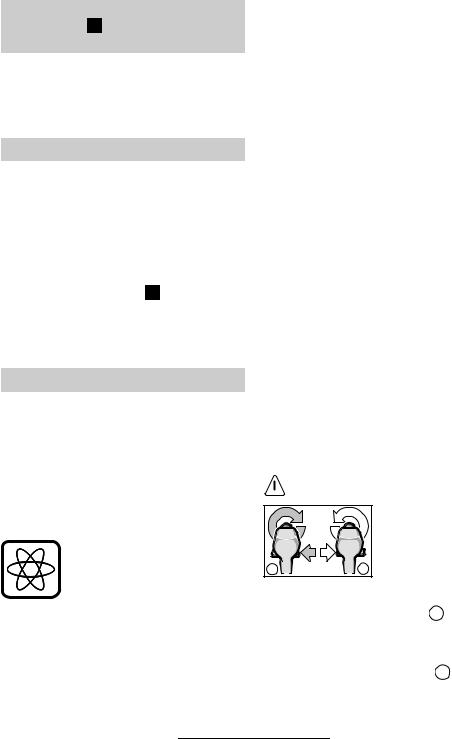
Empuñadura adicional (ver figura A )
(PSB 18 VE-2/PSB 24 VE-2)
■Solamente emplee el aparato con la empuñadura adicional 4.
Enroscar la empuñadura adicional 4 a la derecha o izquierda del cabezal del aparato dependiendo del trabajo que vaya a realizarse.
Cambio de útil
Abrir suficientemente el portabrocas 3 e insertar el útil.
Apretar firmemente a mano el casquillo del portabrocas de sujeción rápida 3 hasta dejar de percibir el ruido de carraca (“clic”). De esta manera se enclava automáticamente el portabrocas.
Girar el casquillo en dirección contraria para retirar el útil.
Atornillado (ver figura B )
Sujetar la punta de atornillar 7 directamente en el portabrocas, o en caso de utilizar láminas de destornillador (bits) 11, emplear adicionalmente un portaláminas universal 12.
Puesta en servicio
Montaje del acumulador
Colocar el selector de sentido de giro 8 en la posición del centro = bloqueador de conexión, e insertar en la empuñadura, hasta que enclave, el acumulador cargado 5.
Conexión y desconexión
Para la puesta en marcha del aparato presionar y mantener accionado el interruptor de conexión/ desconexión 9.
La máquina funciona con un número de revoluciones variable entre 0 y máximo según la presión ejercida sobre el interruptor de conexión/desconexión 9. Presionándolo ligeramente, se consigue un régimen de giro reducido, lo que permite una puesta en marcha suave y controlada. No solicitar el aparato de manera que llegue a detenerse.
Para desconectar el aparato soltar el interruptor de conexión/desconexión 9.
Freno de marcha por inercia
Al soltar el interruptor de conexión/desconexión 9 se frena el portaútiles, impidiéndose así que la herramienta siga girando por inercia.
Al atornillar, no soltar el interruptor de conexión/ desconexión 9 hasta que el tornillo haya quedado enrasado con el material. La cabeza del tornillo no penetra entonces en el material.
Selector mecánico de velocidad
Con el selector de velocidades 1 pueden ajustarse dos márgenes de velocidad:
1ª velocidad: Velocidad de giro baja, par elevado.
2ª velocidad: Velocidad de giro elevada, par bajo.
Las velocidades deben conectarse únicamente con la máquina detenida. Si la velocidad entrase con dificultad, presionar brevemente el interruptor de conexión/desconexión 9.
Enclavamiento automático del husillo (Auto-Lock)
El husillo de taladrar se mantiene enclavado al no accionar el interruptor de conexión/desconexión 9.
Ello permite cambiar el útil montado en el portabrocas de forma sencilla, cómoda y rápida.
El portabrocas enclavado al estar desconectada la máquina permite emplear ésta como destornillador para reapretar aquellos tornillos que sobresalgan del material.
Conmutación del sentido de giro
Accionar el selector de sentido de giro 8 solamente con el aparato detenido.
a |
b |
El selector de sentido de giro 8 sirve para invertir el sentido de giro de la máquina. Ello no es posible, sin embargo, si se mantiene presionado el interruptor de conexión/desconexión 9.
Dirección de giro a derechas ( a )
Girar a la izquierda hasta el tope el selector de sentido de giro (modo de operación normal: taladrar, atornillar, etc.).
Dirección de giro a izquierdas ( b )
Presionar hasta el tope hacia la derecha el selector de sentido de giro (para aflojar o desenroscar tornillos y tuercas).
21 • 2 609 932 336 • TMS • 26.01.04 |
Español - 3 |
